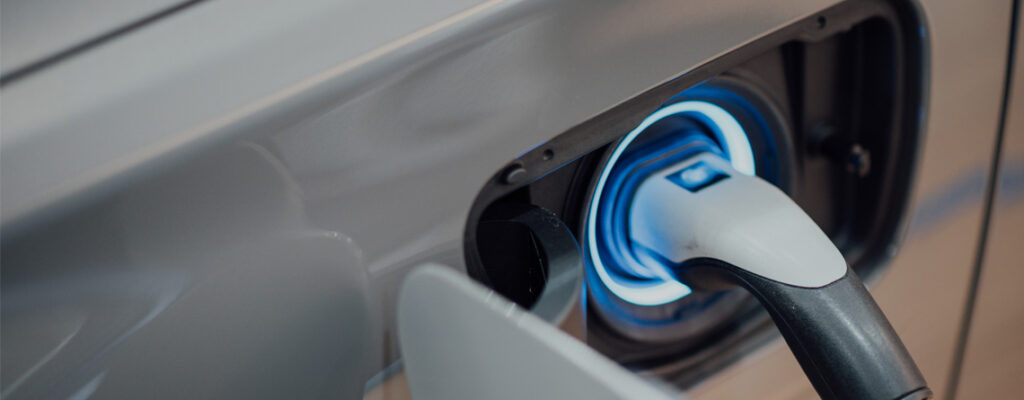Buying a car can be expensive and exhausting, especially recently with supply chain issues crimping supply, taking away consumer negotiating power, and delaying deliveries by months for many. But the process may have become more affordable for those looking to buy an electric vehicle. Tax credits are available to those who purchase electric vehicles (EVs), which can help rebate the consumer as much as $7,500 come tax time. On August 16, 2022, the Inflation Reduction Act was signed into law, and with it came some sweeping reforms to the EV tax credit. Under the old system, any consumer buying a new EV was eligible for a tax credit of up to $7,500, with the final number depending on a range of factors. The new system, which will see most of its provisions go into effect come year-end, will expand coverage to used EVs (defined as pre-owned, clean vehicles, at least two years old) with a credit of up to $4,000, or 40% of the price of the vehicle, whichever is less. Beginning in 2024, consumers can take the credit at tax time, as is the current structure, or apply the credit as a discount at the time of purchase.
Most of the new rules in the legislation go into effect in 2023. However, one of the more restrictive rules that limits the eligibility of the credit is in effect as of the signing of the bill. To qualify for the credit, EVs must have final assembly in North America. This rule greatly reduces the number of options consumers have for purchase if they want to take advantage of the credit. A full list of eligible vehicles can be found here. Models on this list marked as “manufacturer sales cap met” do not qualify for the tax credit until 2023. So, if you want to buy an EV made by a GM subsidiary or Tesla and take advantage of the tax credit, you may be best served to wait until the new year to make this purchase. Also, note that build locations for certain trims and model years can vary with each car, so just because a certain make and model appears on that list, the specific vehicle you are looking at may or may not qualify. The website offers a vehicle identification number (VIN) search for your convenience. Be sure to check the VIN against this website before the final purchase to be sure the vehicle is eligible.
Further restrictions related to income, the manufacturer suggested retail price (MSRP), and the source of battery components also play into the eligibility of a car for the program. Beginning in the new year, consumers’ income and tax filing status will affect their eligibility for the program. Coverage will only extend to single filers making $150,000 or less per year, joint filers making $300,000 or less per year, and head of household filers making $225,000 or less per year. There will also be price caps on the vehicles. New cars will only qualify if the MSRP is $55,000 or less. New pickup trucks, vans, and SUVs will only qualify if they carry an MSRP of $80,000 or less. Used vehicles will qualify if their purchase price is $25,000 or less. The average price of an EV in the United States currently sits at around $66,000. Note that the MSRP includes add-ons to the car, so features such as heated seats and all-wheel drive will reduce the likelihood of a vehicle’s eligibility for the credit.
Those looking to take full advantage of the tax credit may want to consider making their purchase before the end of 2023, as further restrictions on manufacturers will begin to go into effect after December 31, 2023. After this date, EVs with battery components sourced from foreign entities of concern will no longer qualify for the tax credit. That means EVs with components sourced from Myanmar, China, Eritrea, Iran, North Korea, Pakistan, Russia, Saudi Arabia, Tajikistan, or Turkmenistan will lose eligibility for the program. If just minerals used in the production of the battery, and not assembled components, come from one of these countries, then the vehicle will lose eligibility for this program after December 31, 2024. Note that currently, the majority of battery components and minerals in eligible EVs come from China. Further, batteries will have to have at least 40% of minerals sourced from North America or a country the United States has a free trade agreement with by 2024 to qualify for a partial credit of up to $3,750. The additional $3,750 is tied to assembled battery components, of which at least 50% of parts will have to be assembled or manufactured in North America beginning in 2023. By 2029, these battery components will have to be 100% assembled in North America to qualify. Note that these restrictions only apply to new cars, not to used cars. To put it bluntly, there are a lot of restrictions with a lot of moving parts related to this tax credit, and many of them are out of the control of the consumer. The hope is that manufacturers will transition their supply chains to suit the requirements to incentivize consumers to buy their vehicles.
If the new credit structure sounds too complicated or will exclude you from eligibility due to the income, price, or battery manufacturing restrictions, then the “transition rule” included in the Inflation Reduction Act may be worth taking advantage of. Consumers can still take advantage of the old tax credit structure if a purchase is made before the end of the year and a written binding contract is signed. If a written binding contract is signed at the time of purchase, the consumer will still get the credit applied under the old structure, even if the car is not delivered until after the new rules go into effect. Note that the previously mentioned list of eligible vehicles still applies, as this rule went into effect immediately following the bill’s signing. Taking advantage of the transition rule will allow consumers to avoid the income caps, price caps, and battery manufacturing requirements included in the act, but used cars and those produced by manufacturers who have hit their sales caps will not be covered. So, if you are a high-income individual, joint, or head of household filer, looking at a more expensive model, or would like features that may push the MSRP above the pricing threshold, the transition rule may be advantageous to you, as long as you are not buying a Tesla or GM subsidiary model. You will also want to consult your tax advisor before making any purchases or signing any binding contracts for further information specific to your situation and eligibility for such programs.



